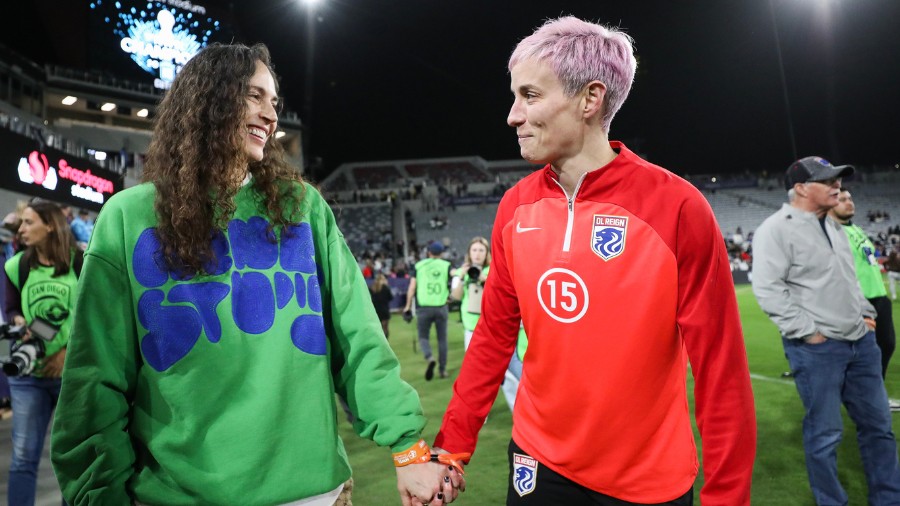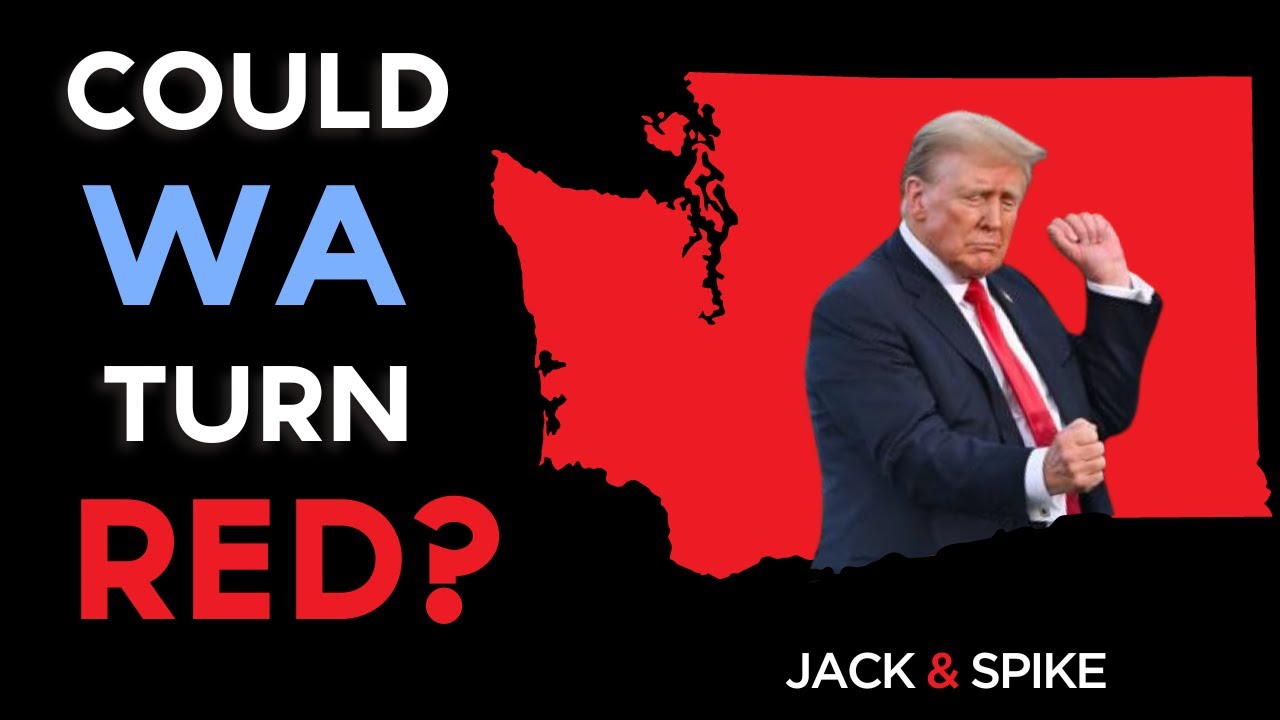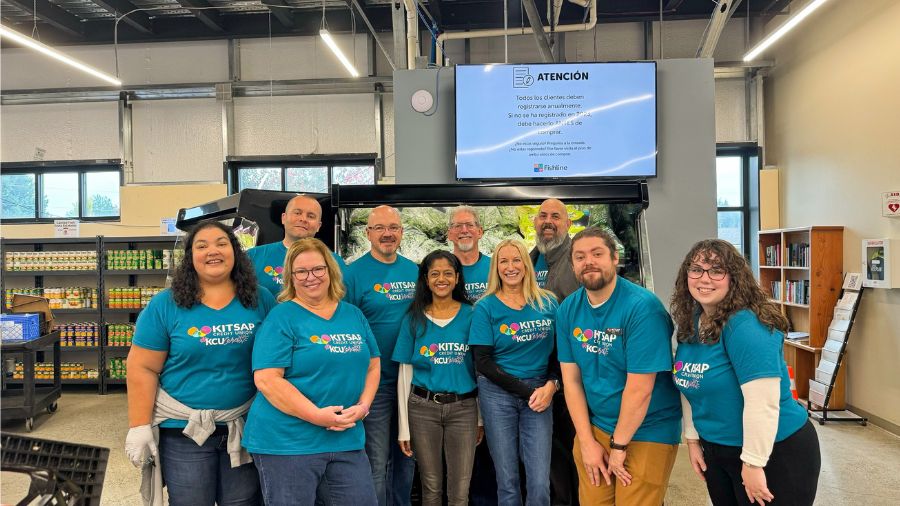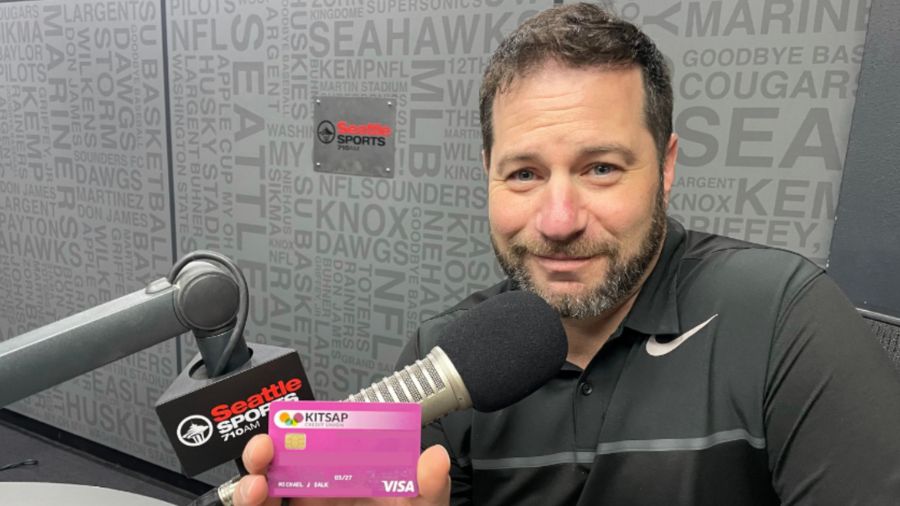Mayfield: Including LGBTQ+ people in curriculum benefits all students
Mar 16, 2024, 10:25 AM | Updated: Mar 25, 2024, 1:39 pm

Megan Rapinoe, right, holds hands with Sue Bird after OL Reign, now the Seattle Reign, lost to NJ/NY Gotham FC in the 2023 NWSL Championship game at Snapdragon Stadium in San Diego on Nov. 11, 2023. (Photo: Meg Oliphant, Getty Images)
(Photo: Meg Oliphant, Getty Images)
When you are different, like being someone who identifies as LGBTQ+, seeing others like you matters.
When you are the only face of color in a neighborhood, seeing other faces of color on the shows you watch or in the books you read can help you feel more connected.
When you are the only person of faith in your workplace, seeing other people of faith in small groups or on social media can enrich your understanding of what you believe.
When you are the only person who identifies as LGBTQ+ in your school, seeing others who identify as you do in the lessons you learn can help you feel less alone.
That is why Washington lawmakers just moved to include LGBTQ+ histories, perspectives and contributions to teaching requirements in our state. (Readers can learn more about SB 5462 here and view a PDF of the bill that passed in the Washington State Legislature here.)
This isn’t some new state-level mandate handed down from Olympia. This is a new way for each school district in Washington to look into its own history and its own community and celebrate LGBTQ+ people and students. Local school boards and administrators can find all kinds of ways to infuse current curriculum with more diversity.
More from Travis Mayfield: Why centering more women’s voices matter this month and every month
In Eastern Washington, that might include a civics classroom visited by a gay identified man who served on a city council. Perhaps, in Central Washington, it’s a language arts classroom discussion about what it means to be two-spirited in indigenous cultures. In Western Washington, it may be an art class assignment documenting the lives of lesbian sports icons like Megan Rapinoe or Sue Bird.
This goes beyond just rainbow flags, pride weeks or LGBTQ+ student clubs. This is about opening the aperture of what we teach and intentionally looking to include more voices.
‘I always knew I was different’
As a kid, I always knew I was different. In my teen years I started connecting that to what I was hearing about people who were gay. I remember struggling to see examples of what gay could look like. Would it be possible for me to have a career that I wanted? A partner who loved me? A family with kids? At that time in the 1980s and 90s in small town America there weren’t a ton of examples, but I did find them occasionally and each one gave me hope. Sometimes, it was just a glimmer I could hold on to and not only feel less alone … but also see a possible path forward for being me.
For kids who don’t identify as LGBTQ+, seeing those perspectives and hearing those voices as a natural part of formal educational discussions can only enhance their empathy and enlarge their world view. I may not be a person of color, a woman or a trans person, but I know I learn so much when I seek out their authentic perspectives and understand their contributions to this life. The same can be true for cis and straight students learning about LGBTQ+ people in their world.
Seattle Gay News to stay open: LGBTQ+ paper won’t close after all
I applaud state lawmakers for moving our schools forward a little bit with this new law. I encourage those who weren’t supportive of the effort to reexamine how it can make things better for all our kids in all our classrooms. The key is always listening and hearing each other as we share our authentic lived experiences. At its very essence that’s exactly what this law will do.
Travis Mayfield is a longtime Seattle media personality and a fill-in host for KIRO Newsradio.
Listen to Seattle’s Morning News with Dave Ross and Colleen O’Brien weekday mornings from 5-9 a.m. on KIRO Newsradio, 97.3 FM. Subscribe to the podcast here.













